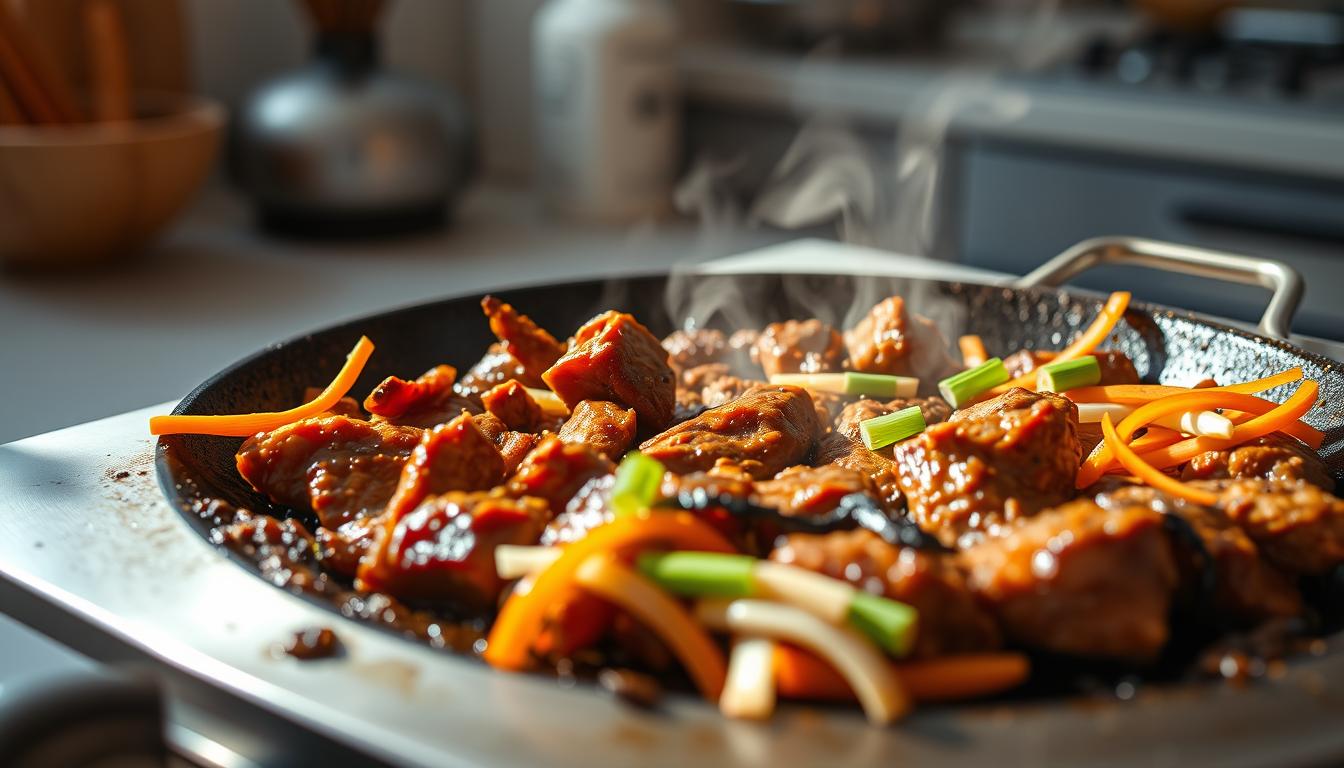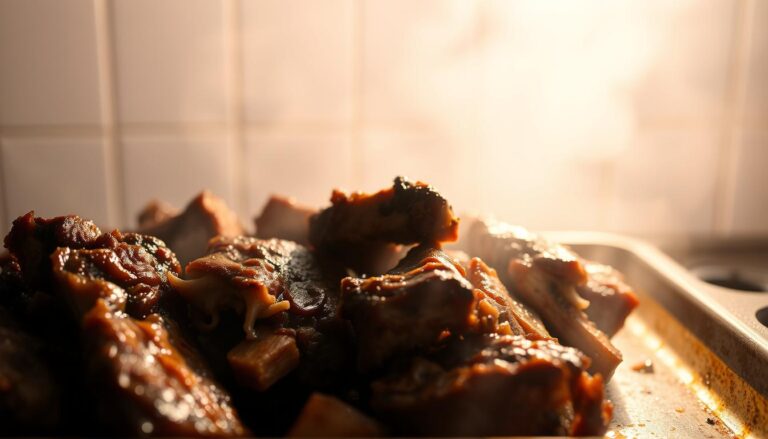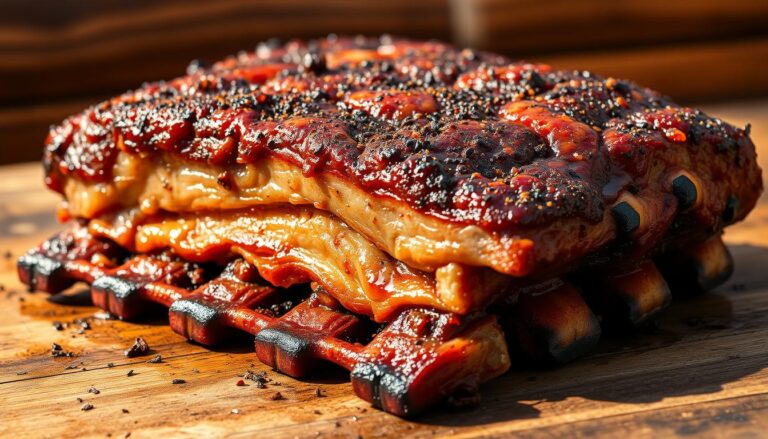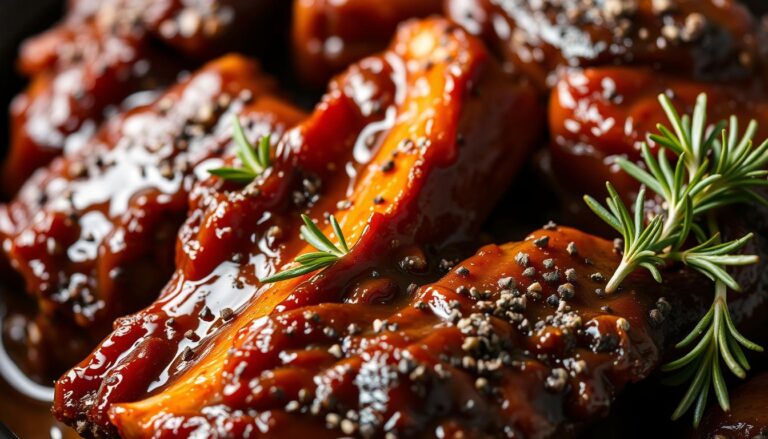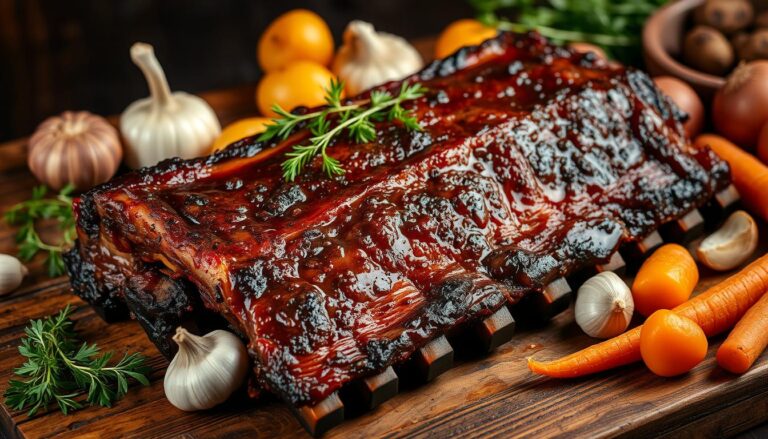Craving a flavorful dish that brings the essence of Korean cuisine to your kitchen? Look no further than this authentic bulgogi recipe. Perfect for home cooks, it combines traditional Korean techniques with a modern twist, making it both approachable and delicious.
At its core, bulgogi is a marinated beef dish known for its sweet and savory flavors. This version uses simple ingredients like soy sauce, garlic, and pear to create a harmonious blend that’s sure to impress. Whether you’re new to Korean cooking or a seasoned pro, this dish is a must-try.
With minimal prep and cook time, it’s ideal for busy weeknights or weekend gatherings. Serve it with lettuce wraps, rice, or your favorite sides for a complete meal. Let’s dive into this easy bulgogi recipe and bring a taste of Korea to your table.
Table of Contents
Overview and Cultural Background
Discover the rich history behind one of Korea’s most beloved dishes. Bulgogi, meaning “fire meat,” has deep roots in Korean culture, dating back to the Goguryeo period (37 BCE–668 CE). Originally known as “maekjeok,” it was a dish of skewered and grilled meat, enjoyed during special occasions and festivals.
During the Joseon Dynasty (1392–1910), beef became more accessible, and bulgogi evolved into the sweet and savory dish we know today. The marinade, featuring soy sauce, garlic, and pear, reflects the culinary heritage of Korea. This combination tenderizes the meat and enhances its flavor, making it a staple in Korean households.
The Traditional Roots of Bulgogi
Bulgogi’s traditional preparation involves marinating thinly sliced beef and grilling it over high heat. This method creates a caramelized exterior while keeping the meat tender and juicy. The dish’s popularity grew as it became a symbol of family togetherness, often served during celebrations and gatherings.
Over time, bulgogi has adapted to modern kitchens. While traditional Korean BBQ requires a grill, many home cooks now use a skillet or stovetop. This flexibility has made the dish accessible to a wider audience, allowing anyone to enjoy its rich flavors.
How This Recipe Fits into Modern Home Cooking
Today’s busy lifestyles demand quick yet flavorful meals. This bulgogi recipe simplifies the process without compromising on taste. With minimal prep and cook time, it’s perfect for weeknight dinners or casual get-togethers.
The marinade, with its blend of soy sauce, garlic, and a touch of sweetness, remains true to its origins. Pair it with rice, lettuce wraps, or a side of kimchi for a complete meal. Whether you’re hosting a korean bbq night or cooking for one, this dish brings a taste of Korea to your table.
| Key Elements | Traditional | Modern |
|---|---|---|
| Preparation | Grilled over open flame | Cooked on stovetop or skillet |
| Marinade | Soy sauce, garlic, pear | Simplified with accessible ingredients |
| Serving Style | Communal, with side dishes | Versatile, with rice or wraps |
Key Ingredients and Marinade Essentials
Unlock the secrets to crafting the perfect marinade for a classic Korean dish. The right combination of ingredients ensures a balance of sweet, savory, and umami flavors. Let’s dive into the essentials that make this marinade stand out.
Understanding the Marinade: Soy Sauce, Garlic, and More
The foundation of any great marinade lies in its ingredients. Soy sauce is the star, providing a deep umami flavor. Combine it with fresh garlic, a touch of sugar, and toasted sesame oil for a sweet and savory profile.
Fresh garlic adds a pungent kick, while sugar helps caramelize the meat during cooking. Sesame oil brings a nutty aroma that ties everything together. These elements work in harmony to infuse the meat with a rich, Korean-inspired taste.
Selecting the Right Beef for Optimal Flavor
Choosing the right cut of beef is crucial for tenderness and flavor. Sirloin or ribeye are excellent options due to their marbling and rich taste. Thinly slice the meat to about 1/8 inch thickness for even marinating and quick cooking.
For the best results, marinate the beef for at least one hour. Overnight marination enhances the flavors even further, ensuring every bite is packed with taste.
| Ingredient | Role | Quantity |
|---|---|---|
| Soy Sauce | Umami base | ⅓ cup |
| Garlic | Pungent flavor | 3 cloves |
| Sesame Oil | Nutty aroma | 2 tablespoons |
| Sugar | Sweetness | 1 tablespoon |
Step-by-Step Preparation Process
Ready to master the art of preparing a Korean classic at home? This step-by-step guide walks you through the process of creating tender, flavorful beef that’s perfect for any meal. From slicing the meat to marinating and cooking, each step is designed to ensure maximum flavor and tenderness.
Preparing the Meat and Marinating for Tenderness
Start by selecting the right cut of beef. Sirloin or ribeye works best due to their marbling and rich flavor. Use a sharp knife or kitchen shears to slice the meat into thin pieces, about 1/8 inch thick. This ensures even marinating and quick cooking.
Next, prepare the marinade. Combine soy sauce, garlic, sugar, and sesame oil in a bowl. Mix well to create a balanced blend of sweet and savory flavors. Coat the beef evenly with the marinade, ensuring every piece is well-covered. For best results, let it marinate for at least one hour. Overnight marination enhances the flavors even further.
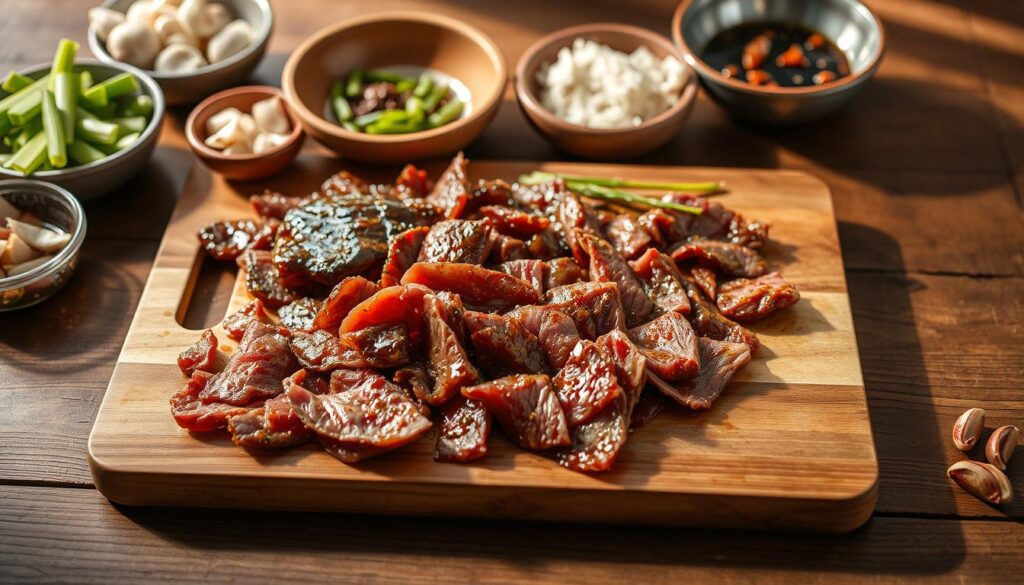
When you’re ready to cook, heat a skillet or pan over medium-high heat. Add the marinated meat in a single layer, ensuring it’s not overcrowded. Cook for about 2-3 minutes per side, or until the edges are caramelized and the center is tender. Avoid overcooking to maintain juiciness.
| Step | Time | Key Tip |
|---|---|---|
| Slicing the beef | 5 minutes | Use a sharp knife for thin, even slices. |
| Marinating | 1 hour to overnight | Longer marination enhances flavor. |
| Cooking | 2-3 minutes per side | Use a hot skillet for a caramelized exterior. |
By following these steps, you’ll create a dish that’s both tender and packed with flavor. Whether you’re cooking for a crowd or a quiet dinner, this method ensures success every time.
Cooking Techniques: Stovetop, Grill, and Skillet Options
Explore the versatility of cooking methods to bring out the best in your Korean-inspired dish. Whether you prefer the convenience of a stovetop or the smoky flavor of a grill, each technique offers unique benefits. Let’s dive into the details to help you achieve the perfect texture and flavor.
Tips for Achieving the Perfect Sear on a Skillet
Using a skillet is a quick and efficient way to cook your dish. Start by heating your skillet over medium-high heat. Add a small amount of oil to prevent sticking. Place the marinated meat in a single layer, ensuring it’s not overcrowded. This allows for even cooking and a crispy sear.
Cook for 2-3 minutes per side, or until the edges are caramelized. Avoid flipping the meat too often, as this can prevent a proper sear. For added flavor, toss in thinly sliced onion during the last minute of cooking.

Grilling Techniques for a Charcoal-Infused Taste
Grilling adds a smoky, charcoal-infused flavor that’s hard to replicate. Preheat your grill to high heat and lightly oil the grates to prevent sticking. Arrange the marinated meat in a single layer, ensuring space between each piece.
Cook for 3-4 minutes per side, flipping once. Keep an eye on the heat to avoid burning. For an authentic bbq experience, consider using a Korean handheld grill. This method enhances the dish’s traditional appeal.
Adapting the Recipe for a Quick Stove-Top Cook
Short on time? A stovetop cook is your best option. Use a large pan or wok and cook in batches to maintain consistent heat. Add a tablespoon of toasted sesame oil for a nutty aroma that complements the marinade.
Cook for 2-3 minutes per side, ensuring the meat is tender and juicy. Pair with steamed rice and your favorite side dishes for a complete meal.
| Method | Heat Level | Cooking Time | Key Tip |
|---|---|---|---|
| Skillet | Medium-High | 2-3 minutes per side | Avoid overcrowding for a perfect sear. |
| Grill | High | 3-4 minutes per side | Oil grates to prevent sticking. |
| Stovetop | Medium | 2-3 minutes per side | Cook in batches for even heat. |
Serving Suggestions and Ideal Pairings
Transform your meal into a Korean-inspired feast with these serving ideas. Whether you’re hosting a gathering or enjoying a quiet dinner, the right presentation and pairings can elevate your experience. Let’s explore how to make your table shine.
Complementary Side Dishes and Garnishes
Serve your meal over steamed rice to soak up the flavorful juices. For a refreshing touch, pair it with lettuce wraps or a side of kimchi. These additions balance the richness of the dish and add texture to every bite.
Consider using a decorative bowl or cast iron plate for visual appeal. Garnish with toasted sesame seeds and thinly sliced green onions for a pop of color and flavor. These small details make a big difference in presentation.
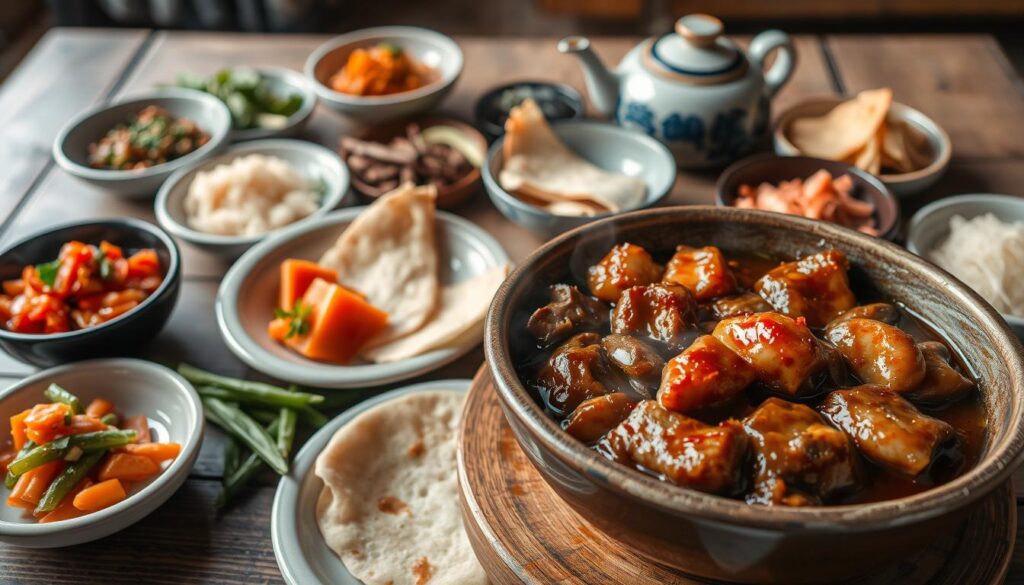
For an authentic Korean meal, include pickled vegetables like radish or cucumber. These tangy sides complement the savory flavors and add variety to your plate. A drizzle of sesame oil or a splash of soy sauce can enhance the taste even further.
| Side Dish | Pairing Tip |
|---|---|
| Steamed Rice | Use a warm bowl to keep it fresh. |
| Lettuce Wraps | Add a cup of dipping sauce for extra flavor. |
| Kimchi | Serve in small portions for a tangy contrast. |
| Pickled Vegetables | Include a variety for color and texture. |
By combining these elements, you’ll create a meal that’s both delicious and visually appealing. Whether you’re serving it in a bowl or on a plate, these ideas ensure a memorable dining experience.
Easy Bulgogi Recipe: Tips, Variations, and Troubleshooting
Looking to elevate your Korean-inspired dish with creative twists? This section provides expert advice on modifying the recipe, troubleshooting common issues, and enhancing the marinade and cooking process. Whether you’re a beginner or a seasoned cook, these tips will help you perfect your meal.
Creative Variations to Enhance the Dish
Experiment with different cuts of beef to suit your taste. While ribeye and sirloin are classic choices, try using flank steak for a leaner option. For a bolder flavor, add an extra clove of garlic or a teaspoon of chili flakes to the marinade.
Want to switch things up? Substitute beef with chicken, pork, or even shrimp. Each protein absorbs the marinade differently, offering a unique twist. Add a tablespoon of honey or brown sugar for a touch of sweetness that complements the savory flavors.
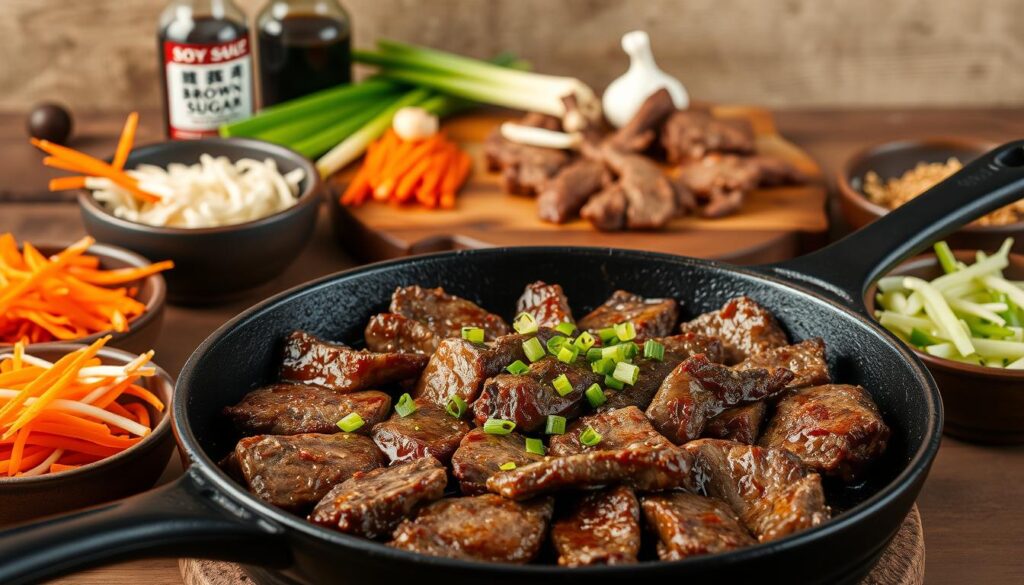
Suggestions for Perfecting Your Marinade and Cook Time
Marinating is key to tender, flavorful meat. For best results, let the beef bulgogi marinate for at least 4 hours. Overnight marination deepens the flavors and ensures even distribution. If you’re short on time, a quick 30-minute soak still works, but the longer, the better.
When cooking, aim for 2-3 minutes per side on a hot skillet or grill. Overcooking can make the meat tough, so keep an eye on the clock. For a caramelized exterior, avoid overcrowding the pan and cook in batches if needed.
If the meat turns out unevenly cooked, check your slicing technique. Thin, uniform slices ensure consistent cooking. Use a sharp knife or kitchen shears for precision.
“The secret to great bulgogi lies in the marinade and the cut of beef. Take your time with both, and you’ll be rewarded with a dish that’s bursting with flavor.”
For a finishing touch, consider adding soft-boiled eggs or a sprinkle of toasted sesame seeds. These small additions can elevate the dish and make it visually appealing. Pair it with steamed rice, lettuce wraps, or a side of kimchi for a complete meal.
Conclusion
Bring the authentic taste of Korean BBQ beef to your table with this simple yet flavorful dish. The key to perfecting it lies in using quality beef and a well-balanced marinade. Whether you cook it on a stovetop, grill, or skillet, the result is tender, juicy, and packed with flavor.
Marinating for at least one hour ensures the meat absorbs the savory-sweet blend of soy sauce, garlic, and sesame oil. Experiment with cook time and marinade tweaks to customize the dish to your taste. Pair it with rice, lettuce wraps, or kimchi for a complete meal.
This dish is not just a meal; it’s a celebration of Korean culinary heritage. Try it at home and share your variations. With its rich flavors and cultural significance, it’s sure to become a favorite in your kitchen.
FAQ
What is the best cut of beef for bulgogi?
Sirloin or ribeye works best for this dish. These cuts are tender and flavorful, making them ideal for marinating and quick cooking.
How long should I marinate the beef?
For the best results, marinate the meat for at least 1 hour. For deeper flavor, you can leave it in the fridge for up to 24 hours.
Can I make this dish without a grill?
Yes! You can use a skillet or stovetop for cooking. Just ensure the pan is hot to achieve a nice sear on the meat.
What can I serve with bulgogi?
Pair it with steamed rice, kimchi, or lettuce wraps. Garnish with green onions and toasted sesame seeds for added flavor.
Can I substitute soy sauce in the marinade?
Yes, you can use low-sodium soy sauce or tamari for a gluten-free option. Adjust the seasoning to taste.
How do I store leftovers?
Store cooked bulgogi in an airtight container in the fridge for up to 2 days. Reheat gently in a skillet or microwave.
Can I freeze the marinated beef?
Absolutely! Freeze the marinated meat in a sealed bag for up to 3 months. Thaw in the fridge before cooking.
What’s the key to a flavorful marinade?
Balance is crucial. Combine soy sauce, sugar, garlic, sesame oil, and toasted sesame seeds for a rich, savory-sweet taste.
Can I add vegetables to the dish?
Yes! Onions, carrots, or mushrooms are great additions. Cook them alongside the beef for a complete meal.
Is bulgogi spicy?
Traditionally, it’s not spicy. However, you can add gochujang (Korean chili paste) or red pepper flakes if you prefer a kick.

